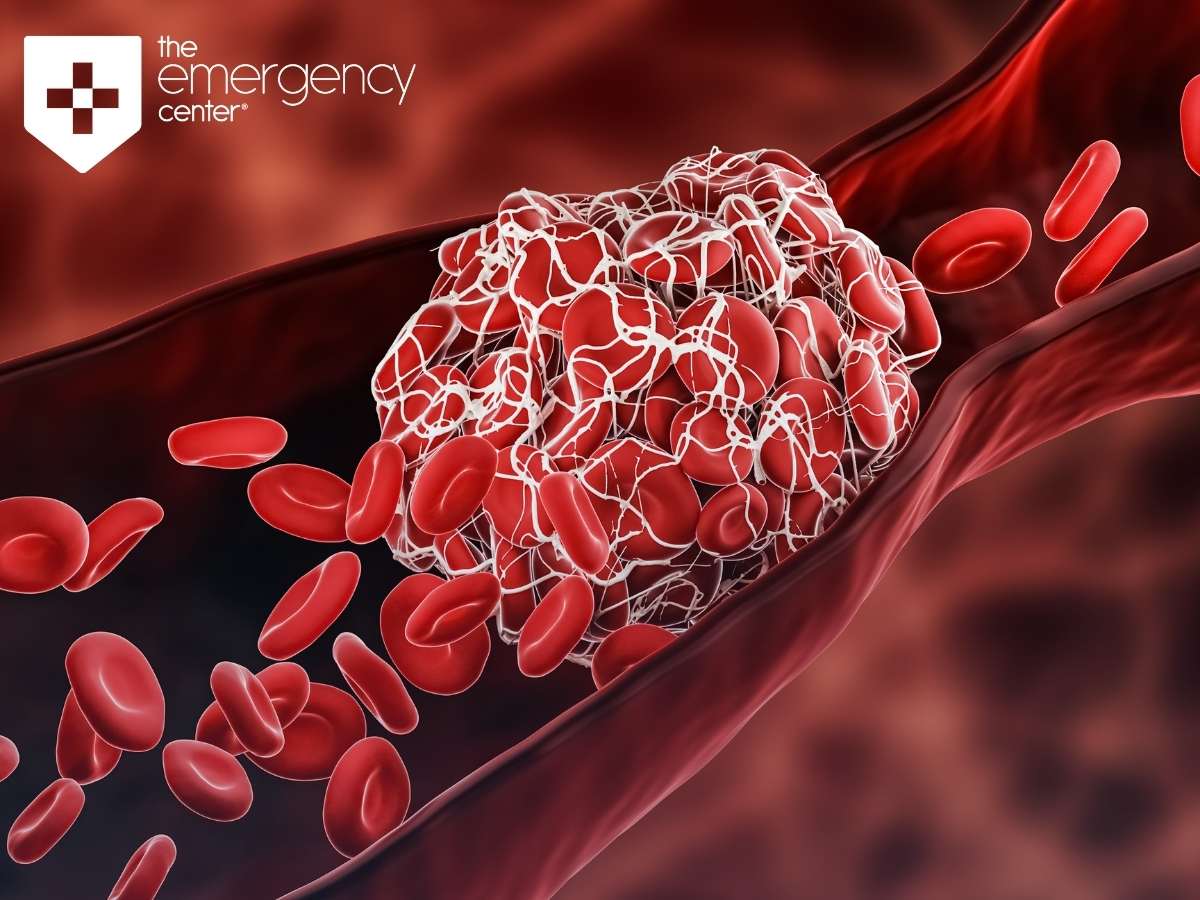When a Blood Clot Becomes An Emergency
How Serious Is a Blood Clot?
The last time you cut yourself and pressed a rag to it or put a band aid on child’s skinned knee, ultimately you were counting on a blood clot to stop the bleeding. A blood clot is when blood cells clump together to form a spongy mass. They are critical to stopping bleeding for both superficial and serious injuries. However, if they form in the wrong place at the wrong time, they can pose a serious health threat.

What Causes Blood Clots?
Often, dangerous blood clots form in blood vessels without a clear cause. They can occur in virtually any part of the body. Regardless of where they form, they can block blood flow, or sometimes more seriously, break off and travel to other areas of the body, where they can cause a life-threatening issue like a stroke.
While the precise reason a blood clot may form at a certain time and place is often unknown, there are numerous common medical factors that can increase an individual’s risk of blood clots:
- Certain medications, including contraceptives
- Pregnancy
- Heart rhythm condition (such as A-fib) or heart failure
- Peripheral vascular disease
- Obesity
- Certain surgical procedures
- COVID-19
- Family history of blood clots
Additionally, sitting or lying for long periods of time can increase the risk of blood clots forming, especially in the legs. (This is why medical professionals recommend that people taking long flights get up and walk around the cabin every few hours.)
Blood Clot Symptoms: When To Seek Immediate Medical Attention
It is easy to tell if blood is clotting for a cut or scrape. But what about for clots forming inside a blood vessel? And when is that clot a medical emergency? Since blood clots can occur at any time in just about any part of the body, the symptoms are not always the same. Some blood clot symptoms could also be an indication of another condition.
Signs Of a Potential Blood Clot In The Arms & Legs:
- Unexplained swelling or discoloration in an area (turning a red or blue hue)
- Pain that can take the form of throbbing, soreness or that is dull or sharp and may get worse when touched
- Skin that is warm to the touch as compared to the area around it
Signs Of a Potential Blood Clot In The Heart, Lungs Or Brain:
- Difficulty breathing
- Rapid heartbeat
- Chest pain or feeling a squeeze in the chest
- Coughing up blood
- Pain that radiates throughout the arm, neck or jaw
- Sudden change in vision
- Numbness/tingling on one side of the body
- Issues speaking or understanding others
If You Are Experiencing Symptoms Of Blood Clots, Call Our 24/7 Emergency Room
The Emergency Center offers advanced lab tests and imaging capabilities to diagnose blood clots, which can be difficult to pinpoint. Elevated levels of certain substances in the blood can be an indication of a blood clot. Ultrasound and CT scans are also used to detect the location and potential severity of a blood clot.
Treatment may involve something as simple as a prescription clot-busting medication, which patients can receive starter doses of at The Emergency Center. Should a more involved procedure or long-term solution to prevent future clots be necessary, The Emergency Center can help guide patients through the treatment process and connect them with the resources they need.
Enjoy life. We’ll be here for the bumps along the way.™
The Emergency Center
San Antonio
11320 Alamo Ranch Pkwy
San Antonio, TX 78253
Phone: 210-485-3644



